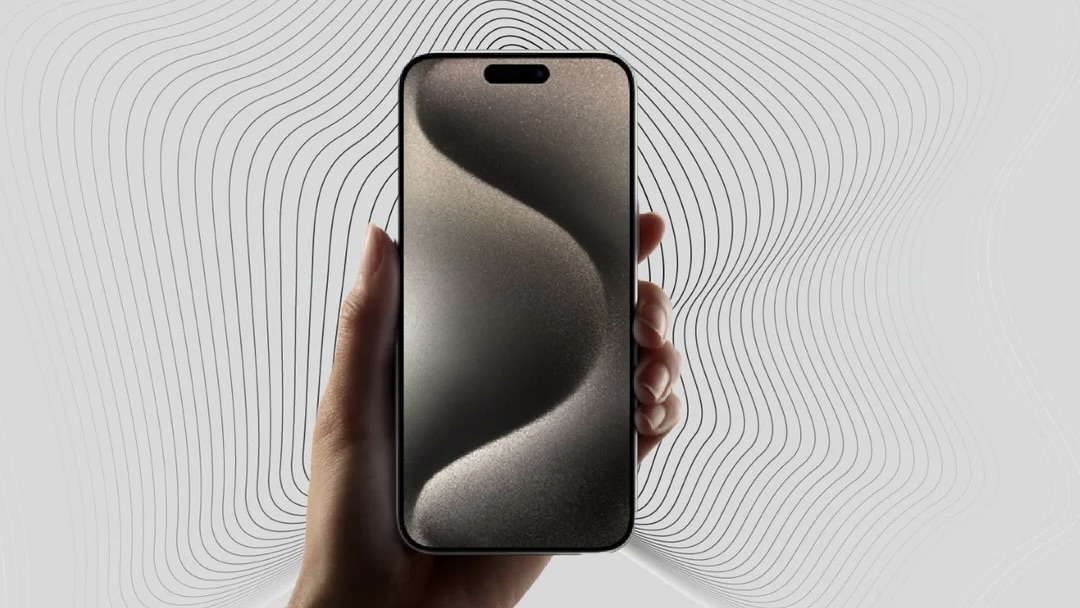
EMF, or electromagnetic field, radiation is an area of concern for some people. According to the World Health Organization (WHO), long-term exposure may cause health issues, while high levels of EMF radiation is known to be harmful over any duration. Short-term exposure to low levels of EMF radiation, such as what you might get from an iPhone or Android smartphone, is deemed to be safe for healthy individuals. But while the WHO has not confirmed any dangerous effects of low-level EMF radiation exposure after thousands of studies, we don’t know for sure about the effects of long-term exposure.
Should it be a factor to consider when weighing up the purchase of an upcoming iPhone 16 or iPhone 16 Pro? According to the WHO, we just can't be certain that EMF causes dangerous health effects. In order to make a connection like this, three types of studies are needed: "Laboratory studies on cells aim to determine if there is a mechanism by which electromagnetic field exposure could cause harmful biological effects. Animal studies are essential for establishing effects in higher organisms whose physiology resembles that of humans to a degree. Epidemiological studies look for statistical associations between field exposure and the incidence of specific adverse health outcomes in humans."
In other words, in order to prove a connection between EMF and health hazards, we would need to have lots of research done three ways: in the lab on cells, animal testing, and epidemiological (statistical) studies.
From the WHO: "Results of diverse studies (cellular, animal, and epidemiology) must be considered together before drawing conclusions about possible health risks of a suspected environmental hazard. Consistent evidence from these very different types of studies increases the degree of certainty about a true effect."
To put it simply, the results of all of these studies would need to give the same result. Correlation is not the same as causation. We aren't there yet.
The WHO goes on to note that the lack of proven health effects so far could mean that there really aren't any. But it could also mean that we just haven't been able to detect the link with our current testing methods.
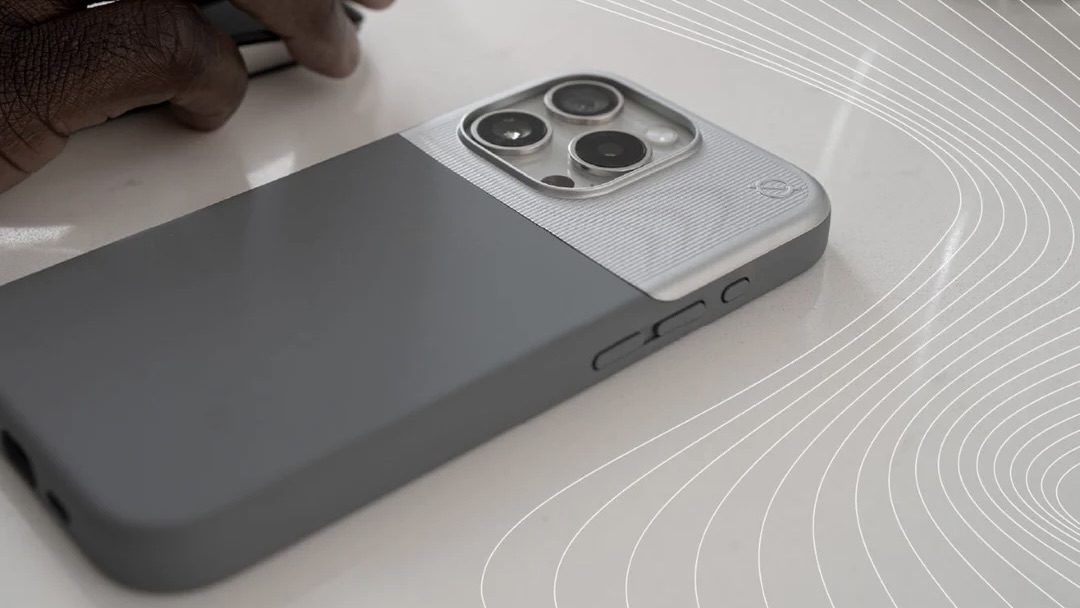
Clearly, more studies are needed for definitive answers. In the meantime, in the interest of caution, case manufacturer Atom Studios has created the Alara case to protect users from EMF radiation.
I wrote about the Alara case in a recent article, Do you need to spend $100 on an iPhone case? As you can tell from the title, the Alara is a pricey case. But is it worth $100? It’s quite a nice case, combining silicone and recycled plastic with a soft microfiber interior. The case is aesthetically appealing and protective, offering 10-foot drop protection and full MagSafe compatibility. Of course, you can find similarly attractive and protective cases for far less money. But if EMF radiation is a concern of yours, you might find it worth its price tag. I spoke with Ryan McCaughey, the Chief Scientist at Atom Studios to learn more about EMF radiation and the Alara case, to try to understand if this is a concern everyone needs to have — or a marketing trick to separate you from your cash.
How bad is EMF radiation?
According to Ryan, there is a growing body of evidence that long-term exposure to radiofrequency (RF) EMF has negative health effects in humans, particularly in regards to the brain and fertility. He mentioned that the World Health Organization International Agency for Research on Cancer has classified RF as a “possible carcinogen” since 2011, based on research that shows an increased risk of brain tumors in heavy cell phone users. He tells me that the U.S. National Toxicology Program (NTP) found “clear evidence” of cancerous heart tumors in rats due to RF exposure. Ryan suggested that sperm quality could be negatively affected by cell phone use. He also mentioned that 50 minutes of cell phone exposure will alter brain glucose metabolism in the area of the brain closest to the antenna.
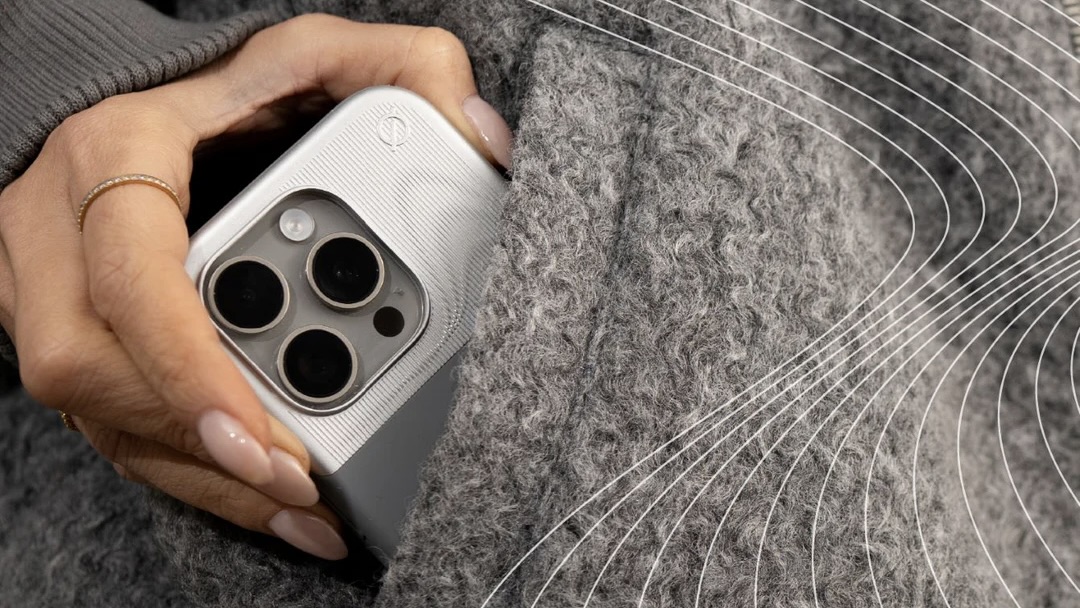
Should you be worried about using a smartphone at all, or even keeping it in your pocket?
The studies mentioned above generally involve people holding their phones up to their ears to talk. But what if you’re holding it in your hands or keeping it in your pocket? There are too many variables to test hand-held use, such as texting, since everyone holds a phone differently.
But iPhone manuals used to have a warning telling users to keep the phone 15 millimeters (0.59 inches) from the body. Now the manufacturer’s RF exposure guidelines are more ambiguous and hidden in the Settings, explaining only how it was tested – 5 millimeters from the body.
Ryan explains that this means if you’re keeping your iPhone in your pocket, it will probably exceed safe exposure limits. One thing to note: the radiation comes from the back of the phone, so putting your iPhone in your pocket with the screen facing your body is safer than the other way.
How are cell phone manufacturers even able to sell phones?
In the US, the Federal Communication Commission (FCC) sets the limit for radiation exposure at a Specific Absorption Rate (SAR) level of 1.6 watts per kilogram (W/kg). This is a metric for quantifying the rate at which cell phone radiation is absorbed by the human body. All phones must be tested by independent certified labs before they can be released.
Some feel that this limit is too lax since it was established in 1996 before keeping a cell phone in your pocket every day was common. Not to mention the possible effects on children – it was far rarer for children to have cell phones back then than they do now.
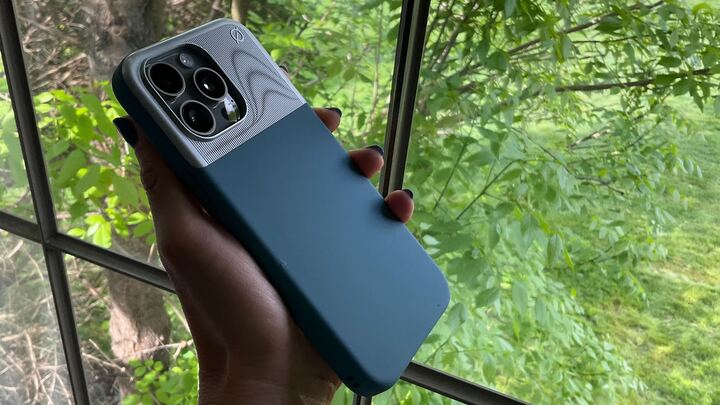
So how does the Alara case offer EMF protection?
Ryan explained that the Alara case uses patented antenna technology to redirect radiation away from the head and body. Highly conductive silver elements change the phone’s electromagnetic field spatial pattern to reduce the amount of radiation absorbed by the body. Atom Studios claims that the Alara case reduces your exposure to cell phone radiation (or SAR) by up to 75%. According to Ryan, the Alara case undergoes rigorous lab testing by RF Exposure Lab, an independent, accredited facility.
The Alara doesn’t block or shield radiation; it changes the radiation pattern from the phone. That’s why it only needs to cover the back, not the front of the phone. Since it’s diverting rather than blocking, your cellular signal won’t be affected. Other EMF radiation protection cases do claim to block or shield radiation, but they may also block your cellular signal. Ironically, a blocked or weak signal causes your iPhone to transmit even more radiation.
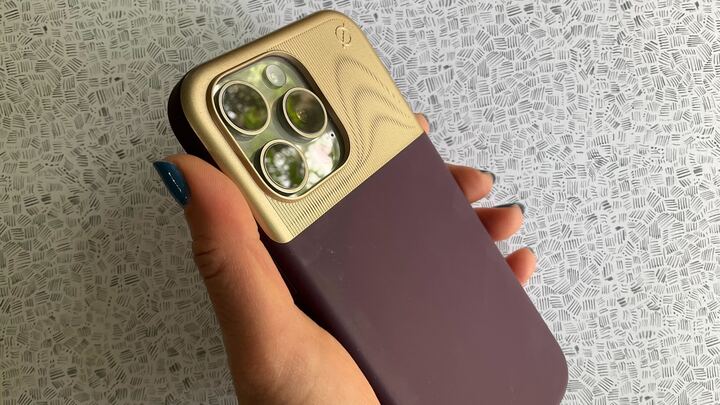
What else can you do to protect yourself from EMF radiation?
Keep your iPhone out of your pocket and away from your body as much as possible. Using your iPhone when it has a weak signal is more dangerous than using it when it has a strong one. Ryan explained that the iPhone uses dynamic power management, which means that it optimizes battery life by transmitting the minimum required for connection. The farther you are from a cell tower, the more signal your iPhone has to transmit to make a connection, which means your exposure is higher. You could even put your iPhone in Airplane Mode when you’re not using it, like overnight for example.
Of course, cell phones aren’t the only sources of EMF radiation in most people’s homes. Microwave ovens, Wi-Fi routers, and Bluetooth headphones are common sources as well. A microwave oven exposes you to about 300 microwatts per square centimeter (µW/cm2) if you’re standing close by, compared to 600 µW/cm2 from a phone that’s 2 millimeters from your body. Wi-Fi routers expose you to less than 1 µW/cm2 as long as you’re three feet away or more. Bluetooth earbuds are only about a tenth as powerful as your iPhone, but they are right in your ears.
How worried should you be about EMF radiation?
There is no conclusive proof that it is dangerous, but there is also no proven safe level of exposure. Certainly, there is no harm in taking simple precautionary measures. If nothing else, keep your handset farther from your body whenever possible. Use the speaker phone rather than holding the device up to your ear for phone conversations. Try not to keep your smartphone in your pocket, but if you must, then keep the screen against your body and the back of the phone facing away from you.
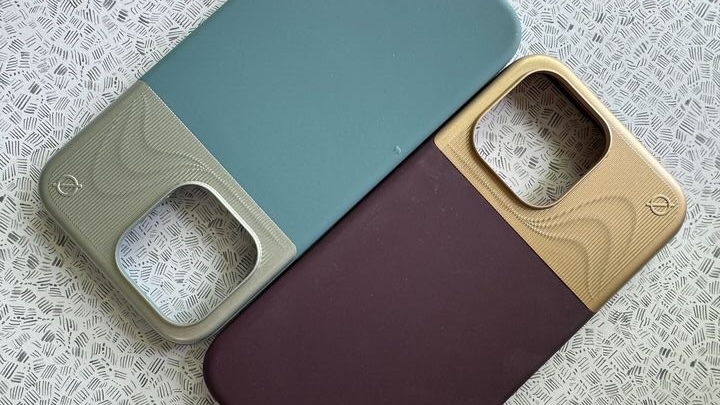
Should you buy the Alara case? As mentioned above, it’s a nice case, at least from an aesthetic point of view, and the physical protection it offers. But I only have the company’s word on the case’s level of radiation protection, with the jury out even among health professionals as to how concerned we need be in relation to radiation produced by our mobile devices. While pricey, Alara’s EMF radiation protection may, at the very least, give you some peace of mind if you have concerns.







